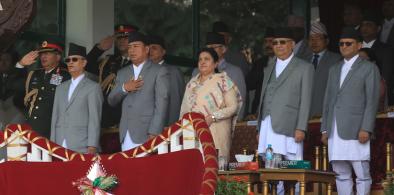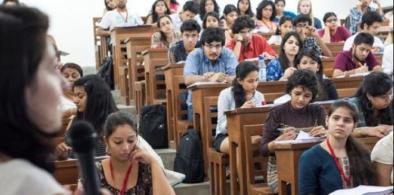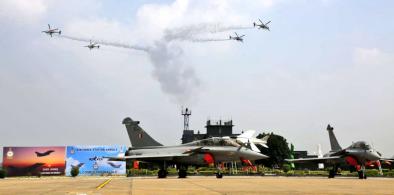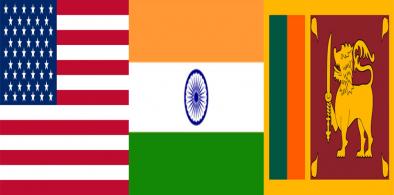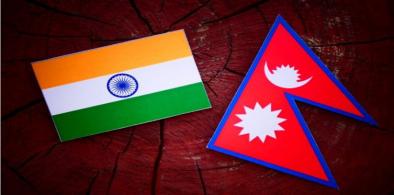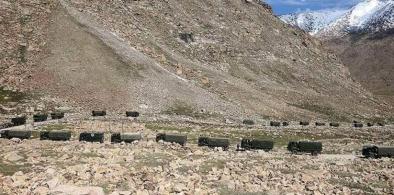Integrating complementary approaches into the primary care setting will help widen its reach and efficacy and help India promote a healthcare service delivery model that will be unique in its approach and act as an example for developing countries across the world, writes K R Raghunath for South Asia Monitor

Gender Diplomacy: A New Peace Project For India‑Pakistan And South Asia
Aside from digital platforms for women-owned business, another concrete example could be to foster women-led marketplaces. Located along borders between the two countries, these could be designed to be safe, offering clean facilities and childcare. Stable and lower cost customs and visa processes could help restore trade relations and the trust of local communities affected by conflict.
With BRICS Presidency, India Will Have To Walk A Fine Balance
There is a difference between a BRICS common currency and de-dollarisation. While trade in local currencies is a compulsion due to sanctions and other changes in the global economic landscape, a BRICS common currency is not feasible due to economic and geopolitical reasons. India’s presidency of BRICS will be important, since it will have to walk a fine balance. While voicing the concerns of the Global South it would not want to get caught in a zero-sum geopolitical wrangling.
Pakistan Year Review 2025: Deep State Grip Tightened
The year 2025 marked a mix of turbulent times for Pakistan with weakening yet stabilising economy, fractured, fragile polity and civil society, rise in enforced disappearances and heightened militancy. It also saw diplomatic initiatives with Asian states and resurgence of engagement with the United States. Overall, the Deep State with Pakistani Army leadership at the core continues to dominate the governance structures and institutions, further impinging on the democratic credentials of the country.
Lessons from the Venezuela Takeover: When Laws Are Irrelevant Without Enforcing Mechanism
It is clear that in those 'virtual' negotiations, the participating sides were the US, Russia and China. The EU, including Denmark, the country whose territory Greenland is, was not. India neither. The old rule that if you are not part of the negotiations, you are likely a subject to the decisions, holds true. Possible future steps would include annexation of Greenland, as indicated by Trump on multiple occasions, including also in interviews after the Venezuela takeover. This would achieve another objective – to weaken the EU further, as no EU state will likely challenge the US if the annexation happens.
On Nepal’s Constitution Day: Time to celebrate its unique, progressive features
The ambitious provisions of fundamental rights mentioned in Nepal’s Constitution would lose its charm if the state turns a deaf ear in giving effect to its provisions in a true and material sense, writes Jivesh Jha for South Asia Monitor
India’s onion export ban leaves South Asia teary-eyed
Onions may just be a singular example but if unwritten undertakings are violated, the saga of bans exemplify a larger story of how a trust deficit ensures that trade within South Asia remains perhaps the lowest in the world, writes N Chandra Mohan for South Asia Monitor
In a policy shift, Maldives aligns with Indo-US strategy in Indian Ocean
The new defence agreement is a clear shift in the Maldives position towards the US after a period when the government in Male forged close economic and political ties with Beijing, writes Shubha Singh for South Asia Monitor
Time to boost connectivity in South Asia: India-Sri Lanka model can be replicated
The progress of India’s air bubble agreements with neighbouring South Asian countries bears watching in the period ahead, writes N Chandra Mohan for South Asia Monitor
Pakistan: The cost of being Shia
Though, the Pakistan government does not officially support discrimination against Shias, it is failing to efficiently counter the influence of extremists and bring an end to violence against the community, writes Sanchita Bhattacharya for South Asia Monitor
Kra Canal project cancellation will upset Beijing’s plans in IOR
Had the Kra Canal come up, China would have taken control of it in all probability like the Hambantota Port in Sri Lanka giving it a tremendous strategic advantage, writes Lt Gen P. C. Katoch (retd) for South Asia Monitor
New education policy will make India global education destination; will attract students from South Asia
With the setting up of world-class education at low cost India will begin to attract students from neighbouring countries like Bangladesh, Maldives, Afghanistan, Nepal, and Sri Lanka for whom it is the first choice of destination when it comes to studying abroad, writes Dr. Sheenu Jain for South Asia Monitor
Rafale induction and the make-believe brigade: India should focus on hard techno-military realities
The Ambala media extravaganza ought to encourage an internal review by the Modi government about strategic communication and related signalling in matters military. Carry a big stick but talk softly is an adage that has not lost its relevance, writes C Uday Bhaskar for South Asia Monitor
US-India-Sri Lanka triad will be beneficial for IOR and Indo-Pacific
Trade instruments like the South Asian Free Trade Area (SAFTA) and the Indo-Sri Lanka Free Trade (ISFTA) agreements are some of the gainful tools with which the US can use to access South Asia’s consumer markets, write Srimal Fernando and Vedangshi Roy Choudhuri for South Asia Monitor
Child marriages go up in Bangladesh during COVID-19: Need to strike at root causes
It is high time that the child marriage rate - gone up during the pandemic - should be brought down drastically and for this, the Bangladesh government, NGOs, and society at large should work together to put an end to this menace, writes Sarmin Akter for South Asia Monitor
Nepal-India cultural and social ties hit hard by border sealing
Cross border marriage, i.e., matrimony between Nepali son/daughter and India’s son/daughter, is very common in bordering districts of Uttar Pradesh and Bihar. This is the reason why Nepal's Madheshis treat Indian soil as their relatives’ home, not a foreign land, write Jivesh Jha & Roshan Kumar Jha for South Asia Monitor
It's going to be a long eyeball-to-eyeball standoff with China: But India is well prepared
The Chinese had realised that not only were they outnumbered but totally outflanked, making their position untenable. Any armed clash hereafter would have been suicidal, writes Anil Bhat for South Asia Monitor
China’s nationalism and global aspirations: India can turn a challenge into an opportunity
India has tremendous goodwill and support from the international community which will influence Chinese future manoeuvres against India, writes Lt Gen PR Kumar (retd) for South Asia Monitor
The Congress rebellion that never was: India's political parties lack internal democracy
Though the party crisis seems to have blown over, for the time being, the future of the Congress does not appear to be bright. And it has nothing to do with the ruling Bharatiya Janata Party (BJP), writes Vinod Aggarwal for South Asia Monitor






